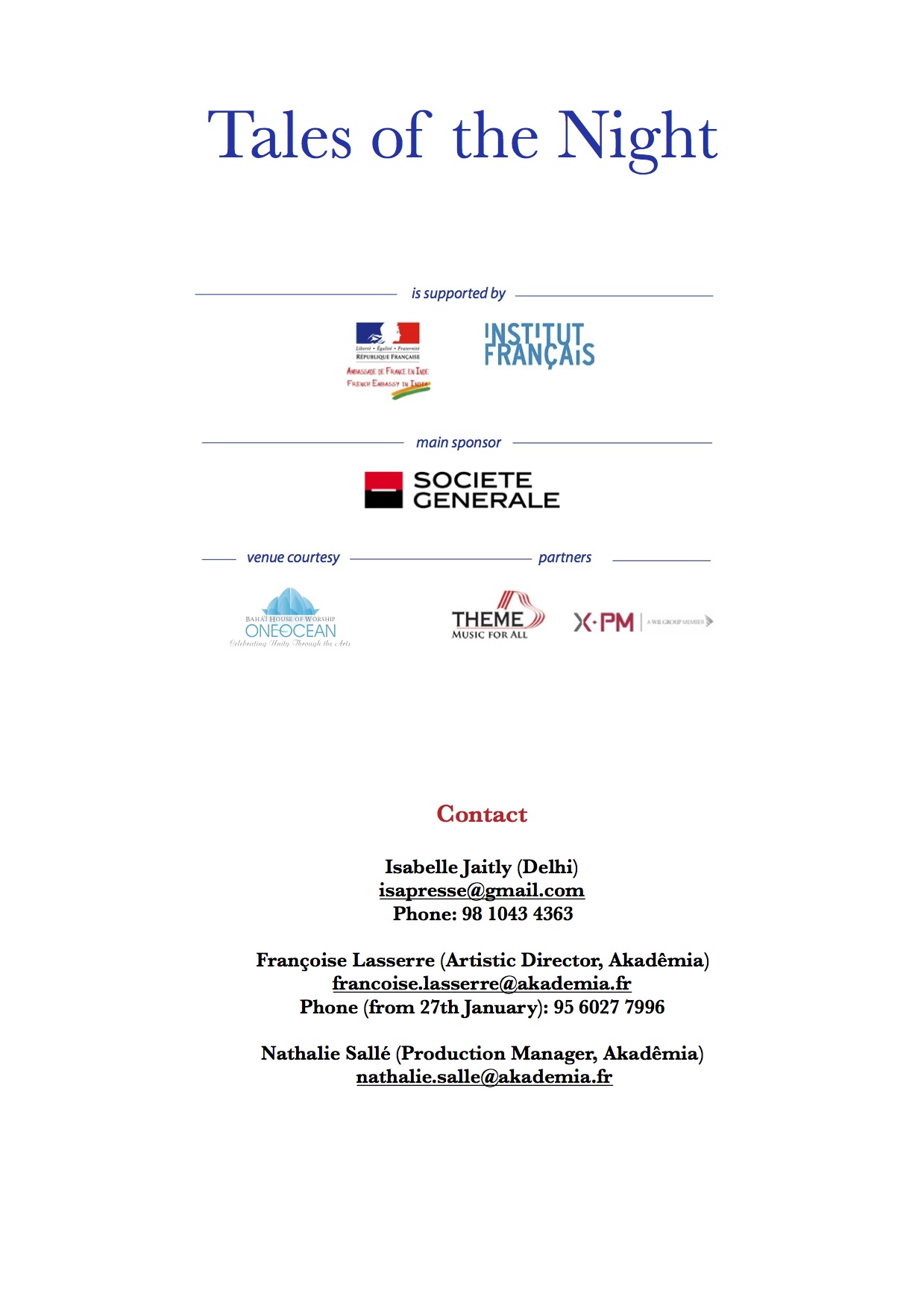‘Tales of the Night’ Concert Series in Bangalore, New Delhi and Pune from 1st – 7th February 2016
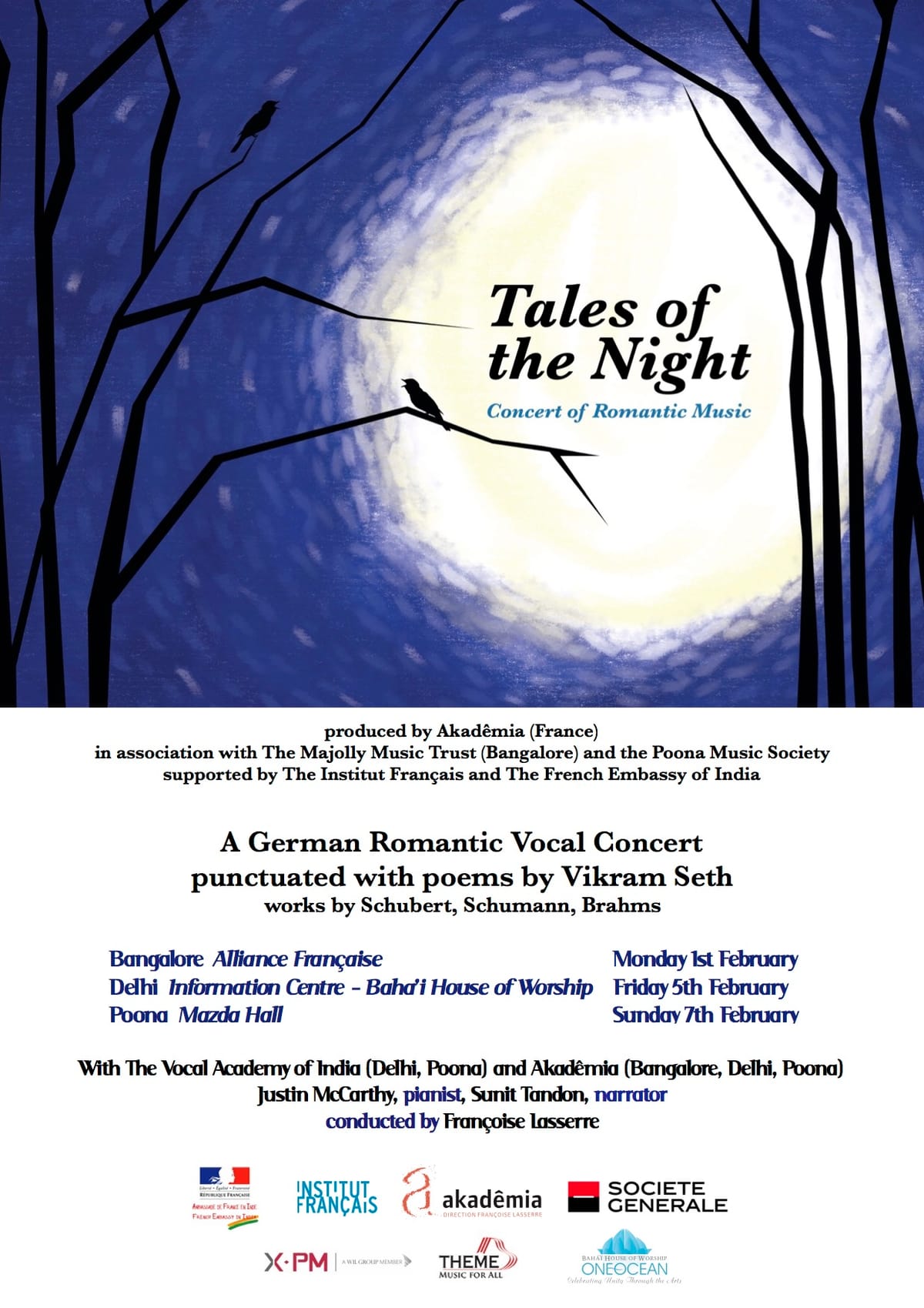
Mark your calendars! The ‘Tales of the Night’ concert series will cover a choral, piano and poetic evening of German Romantic Music by Brahms, Schubert and Schumann in Bangalore, New Delhi and Pune from the 1st – 7th of February 2016. We spoke with conductor Françoise Lasserre who stated :
” Our main aim is to develop high-level tools for Western classical music through workshops and concerts all over India. “
ABOUT TALES OF THE NIGHT
Lieder and choir music with piano by Schubert, Schumann, Brahms, Mendelssohn, Strauss
A Voyage to the Heart of German Romantic Music
Night as a source of poetic inspiration is definitely, along with Love and Wandering, one of the favourite subjects of 19th century Romantic music composers. It lends itself to dreams and voluptuousness as well as to shadows and death. Night can be soothing, sad, awe-inspiring or terrifying. It is ambiguous, and this aspect of light-and-shadow is reinforced by the presence of the moon. All of this together couldn’t help but seduce the Romantic composers, who used the theme of Night in their instrumental as well as in their vocal works. One has only to look at examples like Mendelssohn’s Ein Sommernachtstraum, Schumann’s Fantasiestücke or Chopin’s Nocturnes…but it was in German poetry, in its high quality and great diversity, that these composers found the inspiration for some of Western music’s most emblematic vocal works.
ABOUT THE COMPOSERS
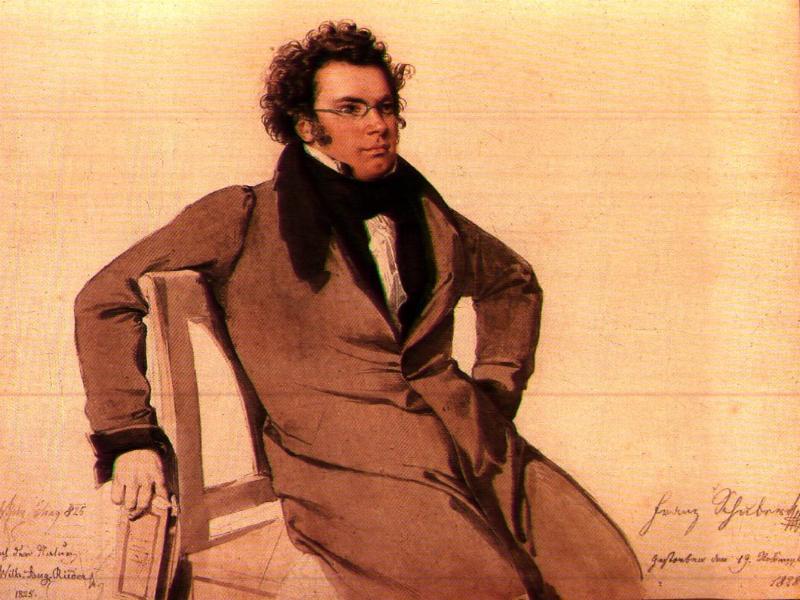
Franz Schubert (1797-1828)
The vocal compositions of Schubert stemmed directly from the very Germanic tradition of domestic music-making. Musicians and music-lovers would get together to play and sing, each bringing their favourite musical scores, and, of course, a few choice bottles.
Der Gondelfahrer (The Gondolier), for male voices and piano, depicts the gentle rocking to and fro of a gondola on a Venetian lagoon, lit up, as it were, by the moon and the stars; the whole image being a metaphor for human suffering in the midst of this vast world. The charming Ständchen (Serenade) is an 1828 commissioned work, initially written for soloist, male choir and piano, then modified for femalechoir at the patron’s behest.
The Lied (song) Ständchen, an extract from Die Winterreise, is an impassioned complaint with a piano accompaniment that seems to strum the instrument with the grace of a mandolin. The serious reserve that emanates from a lied like Du bist die Ruh’ (You are My Rest) makes it one of the most difficult pieces in the vocal repertoire to interpret. Der Doppelganger (The Double), using a text by Heinrich Heine, develops a style halfway between spoken declamation and singing, the piano playing the role of the double. Finally, Der Tod und Das Mädchen (Death and the Maiden) is a youthful work(1817). The notion of Death as a ‘companion in sleep’ is illustrated by a sublime theme that seems to breathe to the rhythm of the composer’s heartbeat.
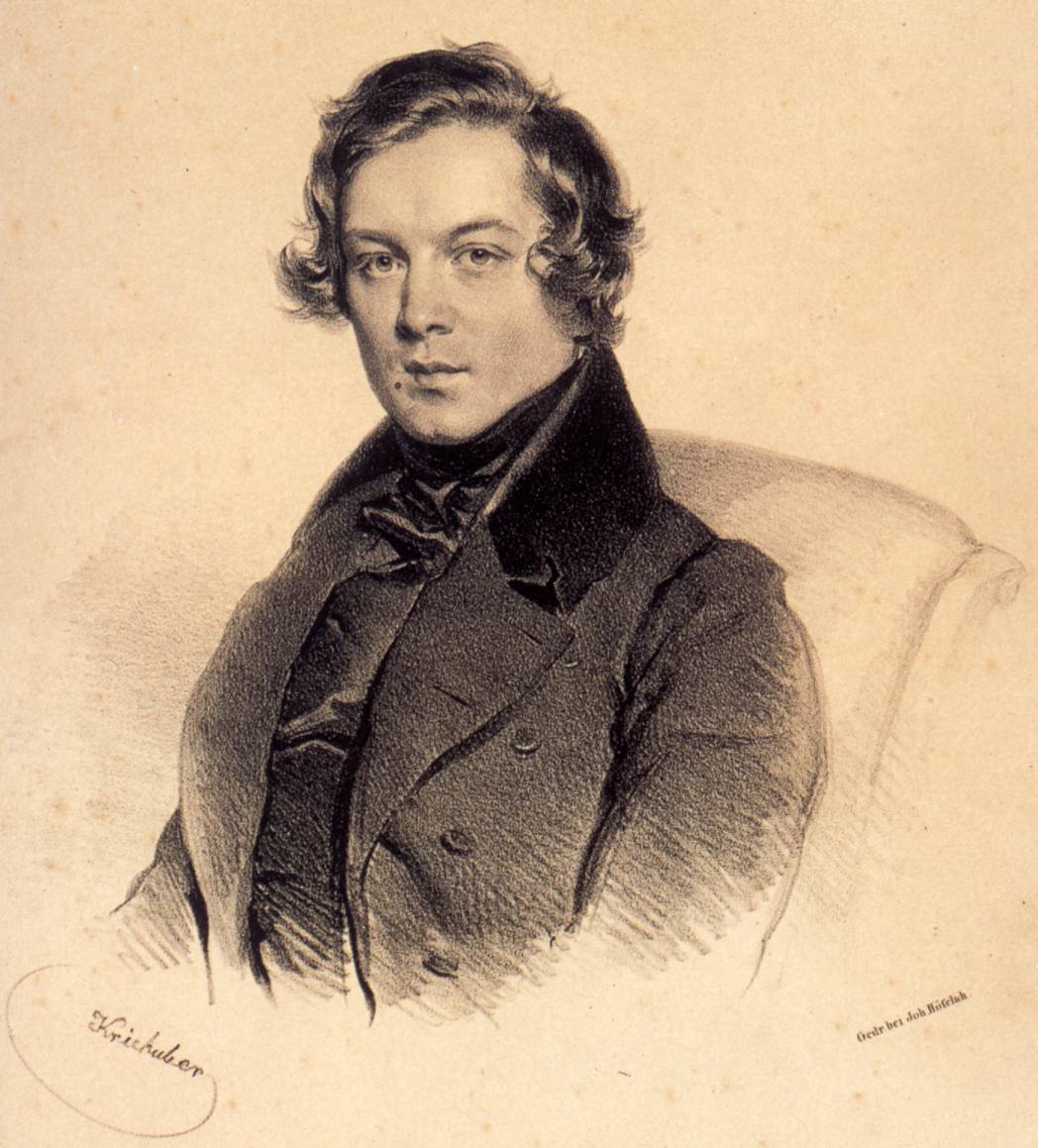
Robert Schumann (1810-1856)
Literature constituted a fundamental axis in the life of Schumann, the composer the most closely identified with Romanticism. Writer and musical critic, he turned to vocal music only at the moment he left piano music, which so supremely incarnated his special universe of dreams and turmoil.
Mondnacht (Moonlit Night) is part of the cycle entitled Liederkreis (literally song-cycle), composed on poems of Eichendorff. This cycle bears the traces of Schumann’s love for the one who would, in 1840, finally become his wife; namely Clara Schumann. The composer indicated in the score that the piece should be sung with a delicate and intimate sound. Die Lotosblume (The Lotus Flower), after a poem by Heine, depicts a fragile being exposed to the perils of passion.
The two works for full choir, Zigeunerleben (Gypsy Life) and Der Traum (The Dream), each belong to one of two distinct creative periods in Schumann’s life, before mental illness began its ravages.
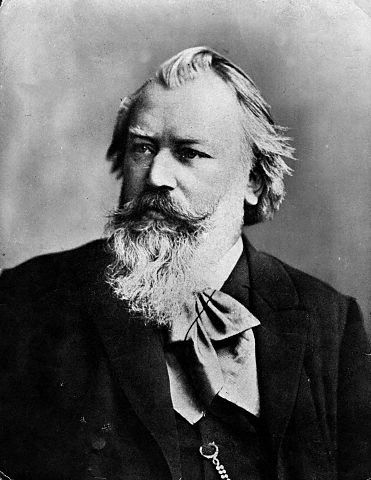
Johannes Brahms (1833-1897)
Brahms’ musical activities as choir conductor in Leipzig and then in Hamburg explain to a large extent the quantity and quality of the vocal works for which we are indebted to him.
The Liebeslieder Walzer (Love-Song Waltzes) were inspired by Brahms’ unhappy love for Julia Schumann, daughter of Robert and Clara. Based on waltz rhythms, the musical writing displays great melodic inventiveness. The Zigeunerlieder (Gypsy Songs) were composed using popular gypsy tunes and melodies and proved to be a great success throughout Europe. Nächtens (At Night) was originally composed for 4 soloists and piano in a more modern style. In stiller Nacht (In the Quiet Night) is based on a popular song describing a lamentation in which all Nature joins.
AKADÊMIA has always been concerned with re-framing the classical music of centuries past in a contemporary context. With this aim in mind, we often look towards other art forms. It is thus that the recitation of selected poems of Vikram Seth announces the mood of each part of this programme. These poems are introduced with fragments of some of Schumann’s music for piano.
ABOUT AKADÊMIA


Created in 1986, Akadêmia is a well-known European instrumental and vocal ensemble.
The name, borrowed from the Platonist garden, is an expression of the humanistic commitment that runs through Françoise Lasserre’s artistic approach.
Its repertory focuses on vocal and instrumental works from the 17th and 18th centuries. Beyond the high quality of its research and its respect for the musical sources, which are indispensable to a certain “authenticity”, its artistic project is marked by a desire to touch its audiences. Its vocation is to bring ancient music alive in the contemporary world, by proposing bridges towards other domains, other periods, or even other cultures.
In 2013, Françoise Lasserre initiated a training programme in India. Thanks to the Neemrana Music Foundation and the French Institute in India, she discovered the enthusiasm for Western classical music among the youth in India. She co-produced with Francis Wacziarg Orfeo Crossing the Ganges, an opera that mingled baroque music, Hindustani music and Odissi dance. It was presented in Delhi and Paris. Following this production, Akadêmia’s instrumentalists and singers held workshops and performed concerts based on two landmark works from the Baroque music: Vivaldi’s Four Seasons and Gloria.
The Indian audiences’ and participants’ enthusiasm, as well as the personal involvement of Akadêmia’s artists, led to new actions to encourage Western classical music in India. The tools that are being developed are first a high level choir and then a chamber orchestra, specifically dedicated to Baroque music, which will be set up in the near future.
Françoise Lasserre, conductor
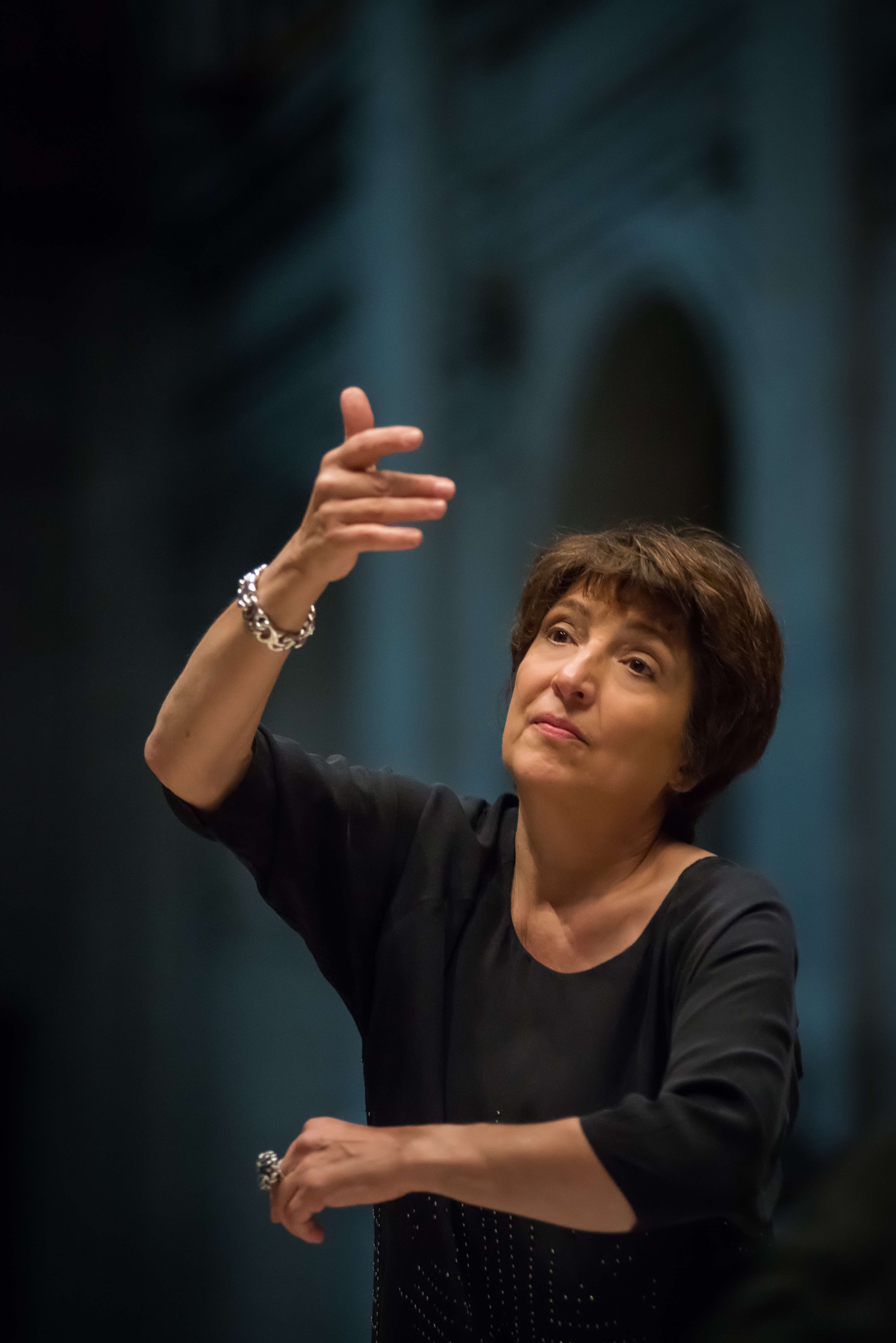

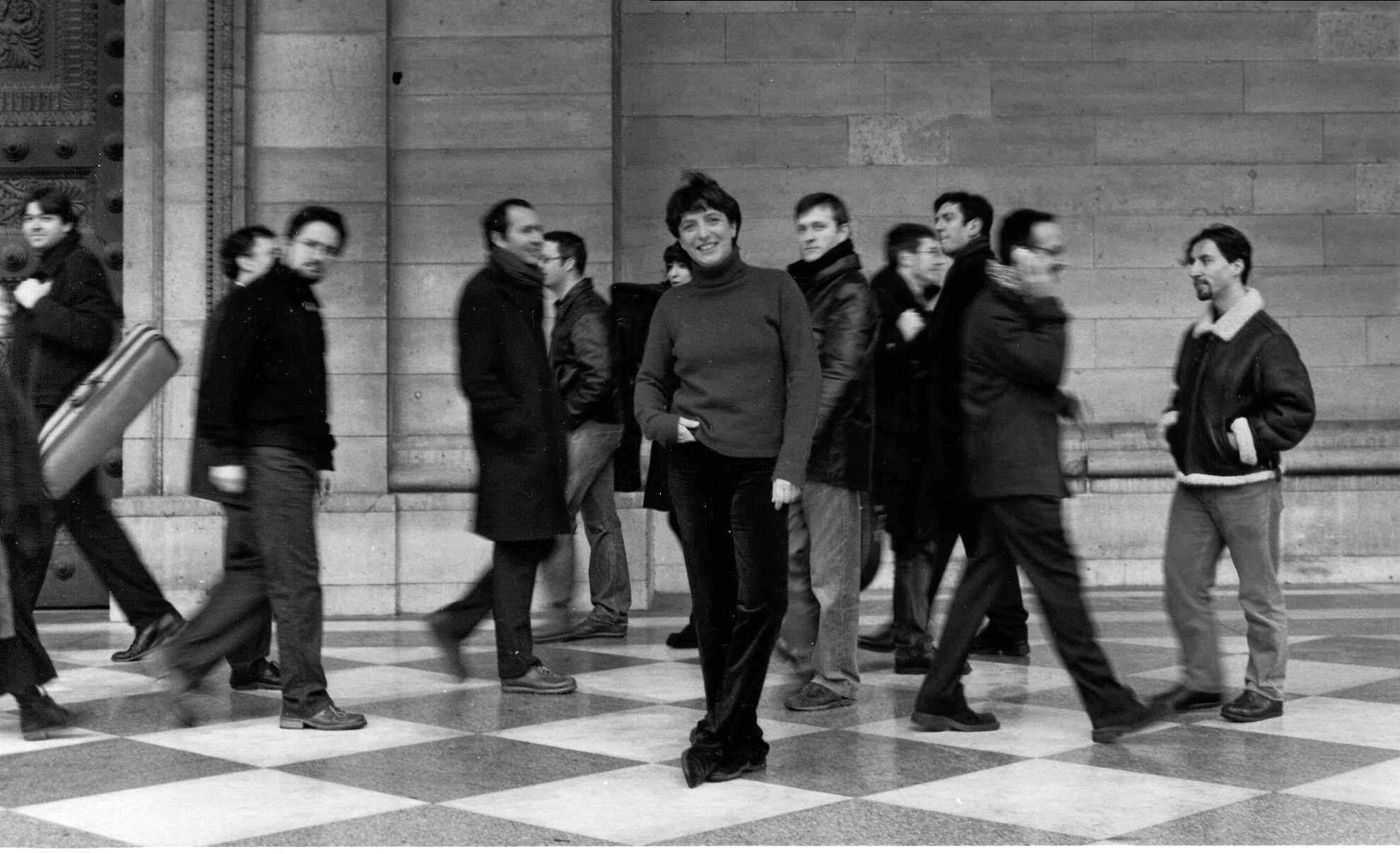
After studying mathematics, Françoise Lasserre went on to study music: analysis, composition, orchestral conducting (Pierre Dervaux’s classes) as well as the transverse flute. She was fortunate to belong to the small group of singers selected by Philippe Herreweghe, to create the Chapelle Royale ensemble. This meeting was to transform her trajectory, leading her to focus her musical activity on ancient music.
In 1986, Françoise Lasserre created Akadêmia. She performed numerous concerts in France as well as abroad with this ensemble that brings together professional singers and instrumentalists. She has released 15 CDs with a repertoire ranging from Palestrina to Bach, with a predilection for Monteverdi and Schütz. In terms of aesthetics, she concentrates on authenticity through her choice of instruments and the number and types of voices. Her work has received many awards: 1st prize in the Palestrina competition in 1994, several ffff awards from the magazine Telerama, Diapasons d’Or awards…
Captivated by Indian culture and North Indian music in particular, Françoise Lasserre chose to create an encounter between Western baroque music, Odissi dance and Hindustani music with Orfeo, Crossing the Ganges. Along with her collaborators, she also dedicates herself to training young artists, who then have the opportunity to perform with Akadêmia in certain productions. Thus, between 2013 and 2015, with the support of the Institut Français in India she conducted workshops in Delhi for young singers; thanks to the co- production between Akadêmia and The Neemrana Music Foundation, these students performed in the opera Orfeo in Delhi and Paris. They have also participated in concerts in India related to Vivaldi.
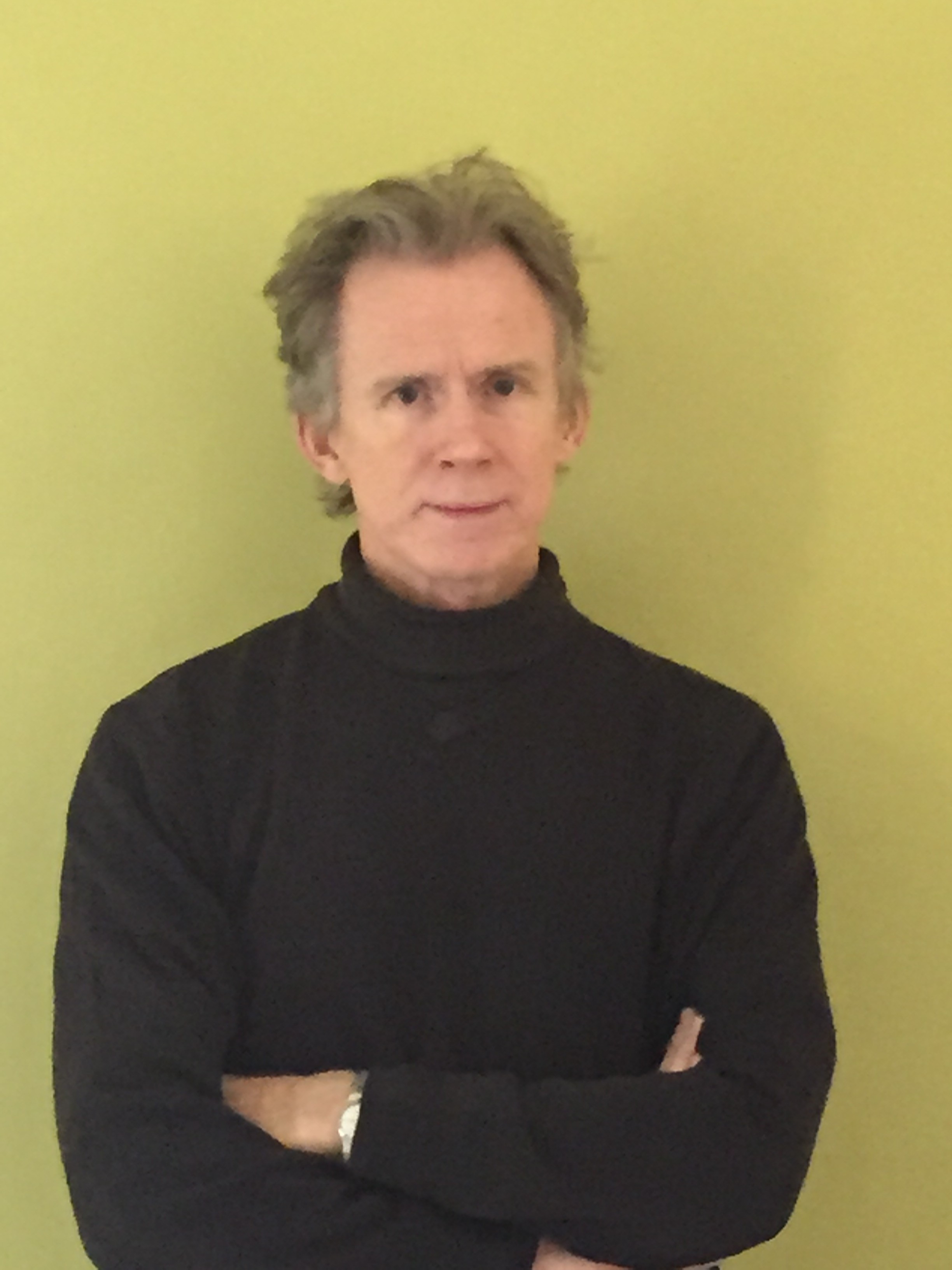
Justin McCarthy, pianist
Justin is both musician and dancer. For almost four decades he has lived in New Delhi, where he teaches and appears in programmes and recitals of piano, harpsichord and Bharatanatyam.
Sunit Tandon, narrator
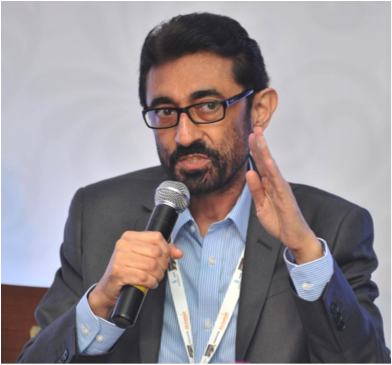
Sunit was till recently Director General of the Indian Institute of Mass Communication, the premier Mass Communication and Journalism Institute of the country. Prior to this, he was Chief Executive of the Lok Sabha Televsion Channel, Lok Sabha Secretariat, Parliament of India.
Sunit Tandon is a well-known news and current affairs anchor on Indian national television (Doordarshan and Lok Sabha Television) and a radio broadcaster. He is also active as a theatre director and actor, with approximately 150 productions to his credit.
He is currently the President of the Delhi Music Society, Delhi’s oldest society promoting appreciation and education in Western classical music, as well as the Director of Yatrik, the capital’s oldest theatre group.
ABOUT THE VOCAL ACADEMY OF INDIA
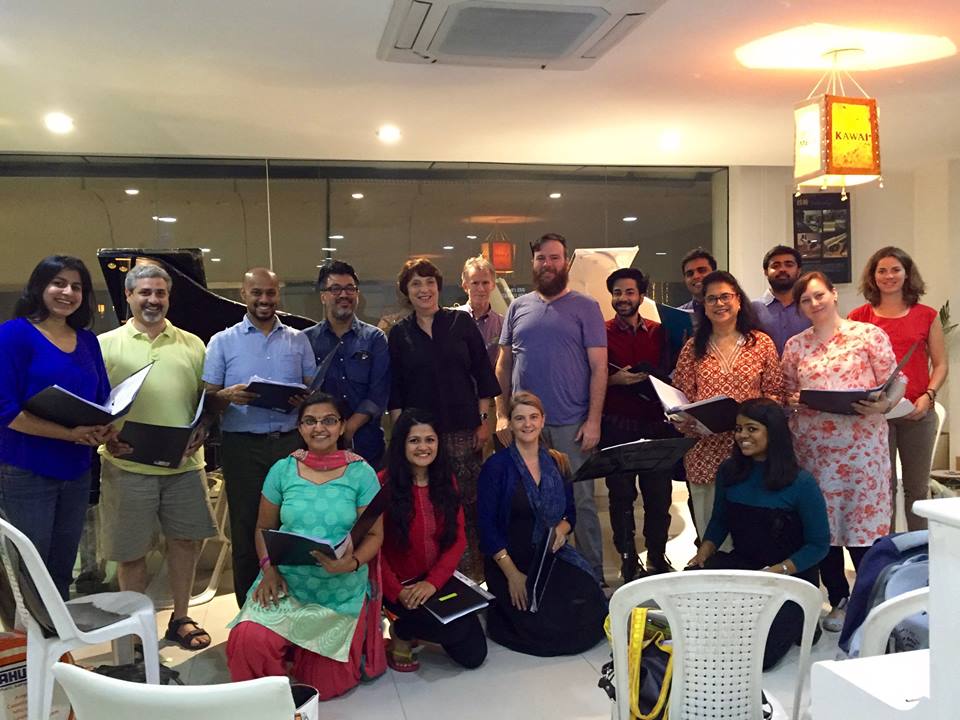
A new Indian vocal ensemble has recently been created under this provisional name. It consists of singers passionate about Western music, who were rst trained by the Neemrana Music Foundation or the Delhi Chamber Choir, conducted by Nadya Balyan. These artists were invited by Akadêmia to participate in several of their productions like Orfeo Crossing the Ganges (Delhi and Paris 2013) or Viva Vivaldi (Delhi 2014). They have acquired the experience that is born out of companionship with professional singers.
Most of them studied under Situ Singh Bühler and continue their vocal training with the help of additional advice provided by occasional teachers like Jasmin Martorell and Jan van Elsacker, Valérie Millot or Marianne Losco; the latter three intervene under Françoise Lasserre’s guidance.
This new ensemble has a professional vocation, and its work is structured around workshops delivered by Akadêmia, supported by the Institut Français and the French Embassy in India. Their work pays particular attention to exploring the relationship between music and text. Using the voice to serve poetic intent or narrative is fundamental to interpreting Baroque music, but it also lies at the heart of Schubert, Schumann, Brahms, or Mendelssohn’s compositional process in the 19th century.
As the ensemble seeks to gather the best Indian singers, it also wants to develop Western classical music concerts in India as well as in the surrounding region. It will collaborate with Indian NGOs to multiply the creation of choirs in schools, as well as amongst under-privileged children.
